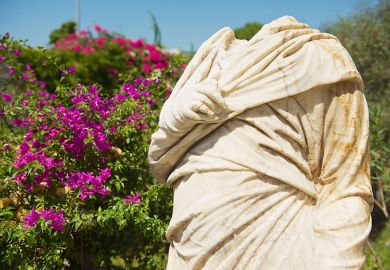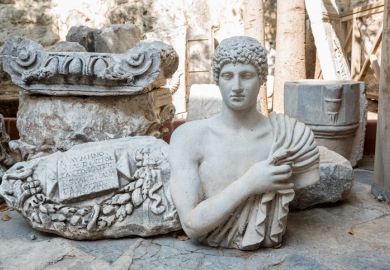The value of a liberal arts education, an article of faith since the emergence of the modern university, has been called into question by the digital age.
Amid mounting scepticism towards higher education, an explosion of computer science programmes promising immediate returns and now the staggering potential of artificial intelligence (AI), some look at the liberal arts and ask, “What’s the point?”
This is a mistake. The liberal arts have as much to offer students and society as ever. What’s more, the choice between them and technological fields is a false one. Already, technology is shaping liberal arts disciplines, and vice versa. But it’s time for universities to build more bridges between the two and offer students a more integrated educational model.
We can begin by taking liberal arts off the defensive. Employers have long valued the capacities developed through the study of liberal arts, including critical thinking, adaptability, communication and collaboration. In the innovation age, the creativity nurtured through liberal arts study – less a skill than a habit of mind – is especially prized. It is no coincidence that the founders of a number of major tech companies graduated with liberal arts degrees.
Liberal arts education also creates societal value in the kind of citizens it produces. Civic life requires understanding different points of view and cooperating across those differences, as well as ethical discernment and the ability to ask the right questions. The rise of misinformation demands the healthy scepticism cultivated by the liberal arts – plus the ability to synthesise knowledge, analyse evidence and deploy reason and nuance.
The tools of civil discourse, also part and parcel of liberal arts education, are vital in our polarised times, too. And society’s most pressing problems, from climate change to food insecurity to geopolitical conflict, would benefit from more approaches that combine the power of technology with humanistic insight.
Indeed, even as we champion the liberal arts, we must acknowledge that they can no longer be technology-free zones. We can no longer deem as educated a student who knows their history, literature and a second language, but doesn’t know anything about statistics, data analytics or the fundamentals of computing. These are now central to a young person’s ability to understand, contribute to and succeed in the world.
Already, AI and other technologies are influencing liberal arts disciplines. At Vanderbilt, an anthropology professor and his team are reshaping our understanding of Andean civilisations by locating previously hidden archaeological sites using AI-scanned satellite images. Meanwhile, Vanderbilt historians are using AI and computer science to preserve thousands of disintegrating historical documents in the Slave Societies Digital Archive, the world’s largest collection of historical records of Africans in the Atlantic World.
Crucially, this cross-pollination between technology and the liberal arts works both ways. Just as technology is driving the future of the liberal arts, liberal arts disciplines are shaping our thinking about technology and how we use it. The philosophical concepts of causality, fairness and theory of mind are already core concepts in computer science, for instance, informing how we design, interrogate and translate AI tools.
In Vanderbilt’s data science programme, when teams of students are asked to solve problems of their choosing, they very often create AI models built not for technical problems, but more human ones – such as learning English as a second language, or supporting individuals during psychological counselling.
And last spring, one of our humanities professors, an expert in how technologies invented during the Scientific Revolution affected global affairs, led a team of undergraduates in conducting original research on the cyberattacks known as phishing. Applying the lens of humanistic inquiry while working with cybersecurity experts, the team gained insights into what makes people open emails and click links they shouldn’t.
When it comes to merging the liberal arts and STEM, students are often out in front. In Vanderbilt’s last graduating class, more than a quarter of our students double majored in a liberal arts discipline and a science. We’re responding with offerings such as our medicine, health and society major and our programme in climate and environmental studies – both of which combine the natural sciences and other technical fields with the humanities and the social sciences.
More broadly, we have begun establishing a College of Connected Computing, which will reach across the university in an interdisciplinary “computing for all” approach. Our vision is that the college will be an empowering resource for every student and faculty member, whatever their fields of interest, enabling them to take their work in bold new directions.
Last week, in partnership with Times Higher Education and with the aim of building bridges among traditionally siloed fields, our university hosted the THE Liberal Arts Summit, where more than 220 attendees from 10 countries and 63 institutions came together to reimagine liberal arts education in an increasingly digital world. What we saw there revealed thrilling new possibilities for our students, during college and after.
The key is for those of us in higher education to look beyond outdated models, with their divisions among disciplines, and offer all students, no matter what they’re studying, a holistic approach as multifaceted as the world they’re going to live in. Students are leading the way. Our task is to catch up and to provide new ways of learning that do justice to this age of convergence.
Daniel Diermeier is chancellor of Vanderbilt University.
Register to continue
Why register?
- Registration is free and only takes a moment
- Once registered, you can read 3 articles a month
- Sign up for our newsletter
Subscribe
Or subscribe for unlimited access to:
- Unlimited access to news, views, insights & reviews
- Digital editions
- Digital access to THE’s university and college rankings analysis
Already registered or a current subscriber? Login








